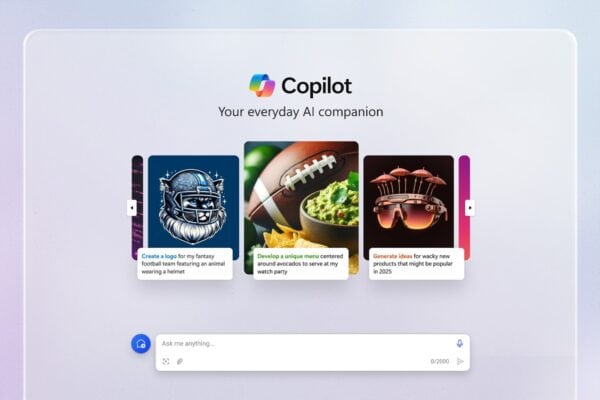Microsoft SharePoint lends itself to multiple business use cases. Among the most popular scenarios are document, workflow, and knowledge management, not to mention corporate intranets (probably the most well-known of SharePoint’s applications), and extranets.
This article looks at what makes SharePoint such a successful solution for these purposes and discuss domains for which it’s less adaptable. Let’s start on a positive note and explore those business needs that SharePoint is best suited to meet.
SharePoint as a Document Management Platform
When configured as a document management system (DMS), SharePoint serves as a central document repository, and allows organizations to quickly and easily create, store, and retrieve documents as well as manage the complete document management lifecycle.
Even right out of the box, SharePoint is suited for document management purposes, as it is equipped with the following core features:
- Impressive storage capacity (1 TB per organization with additional 10 GB per license in SharePoint Online; 4 TB per content database in SharePoint On-Premises)
- Powerful indexing and metadata functionality
- Versioning capabilities
- Sophisticated search features
- Multiple layers of security to protect your organization’s intellectual property
- A wide range of supported file types, including less common ones, such as 3D models, and files with .ods and other rare extensions
In a business world where employees aren’t able to find up to 85% of documents they need, SharePoint is the solution that allows enterprises to put their corporate documents in order and lets users save a great amount of time on document search.
It comes as no surprise that SharePoint-based DMSs are particularly popular in large enterprises that have to deal with thousands or even millions of documents daily. For example, this can be the case of an oil and gas company that manages over 10 million of documents or a construction giant that needs a DMS to support corporate documents, project presentations, and engineering blueprints equally well.
SharePoint for Knowledge Management
Knowledge management solutions (KMS) differ from DMS in a handful of ways, most notably by content relevance and types.
For example, the purpose of a DMS is to allow storage and retrieval of any document, for any purpose, within the scope of an organization’s activities. However, a KMS should help users find content that solves a specific problem or answers a question. At the same time, while documents represent ready-to-use pieces of content, knowledge can come unshaped and often requires further cleaning and documenting, particularly if you consider processing tacit knowledge.
If you don’t plan in-depth tuning, the out-of-the-box SharePoint can serve as a wiki-style knowledge base for both internal and external use. A great advantage is that a SharePoint-based knowledge base can be part of a larger intranet or extranet, so organizations don’t have to support two different solutions. By default, all SharePoint versions include tools you can use to build out a knowledge management solution, such as:
- Wiki library web parts
- A Wiki page library
- An Enterprise Wiki template
- The capability to build custom lists (for FAQs)
- A Discussion Board web part (for interactive knowledge sharing)
Apart from the features that are initially knowledge-oriented, organizations can also go for custom development to create a tailored solution for their KM needs. You can transform SharePoint into fully functional knowledge portal with feature-rich sites and subsites dedicated to specific knowledge areas. The portal can also include knowledge forums, media libraries, expert blogs and catalogs of best practices.
SharePoint Intranets
An intranet is essentially an enterprise-wide collaboration network, and SharePoint excels as an intranet platform. Aside from the document and knowledge management capabilities already mentioned in this article, SharePoint offers a range of features enabling its use as an intranet CMS. These include:
- A SharePoint home page for quick access to all intranet sites and third-party systems used in an organization (CRM, ERP, time tracking portal, corporate website, etc.)
- Team, communication, and hub sites to support collaboration across your organization
- Libraries and lists for structured content management
- Intuitive web parts and pages
- Flexible content sharing options
- A mobile app to provide a responsive intranet experience for users in and out of the office
- Built-in workflow management capabilities
- Enterprise-wide search capabilities
- Social features (communities, awards, forums, media galleries, etc.)
If your organization runs cloud-based deployments, you can also turn your attention to Office 365. While you can choose SharePoint Online as an intranet basis, you can extend your intranet’s capabilities through multiple applications that make part of Office 365 (Microsoft Teams, Planner, Yammer, Stream, Sway, etc.)
Success stories of SharePoint-based intranets are numerous. For example, global science corporation 3M launched a custom SharePoint portal to bring multi-language content, improved search capabilities, and effective communication to all of its 121,000 employees around the world. The 3M Go intranet has won several accolades for design and effectiveness, including the Nielsen Norman Group’s Intranet Design Annual Award for 2019.
SharePoint Extranets
Extranets are intranet extensions providing access to external businesses, stakeholders, or other user groups. Extranet users can sign into your organization’s intranet, but only to access information or features for which you authorize them.
For example, you might provide an extranet that your customers can use to place purchase orders, or for suppliers to view your inventory so they can plan and schedule inbound deliveries. These types of implementation are especially popular in the retail, manufacturing, energy, and automotive industries.
All the above-mentioned SharePoint features can be leveraged to create a user-friendly extranet, on-premises or in the cloud. Like with intranets, you can prefer launching an extranet in the cloud, thus enabling external users to access a wider set of features and collaboration tools. However, if you stick to strict security regulations, it might be more reasonable to go with on-premises and have a full control over your extranet deployment.
Workflow Management with SharePoint
Workflow management is the coordination and, where practical, the automation of task sequences in a business process. Microsoft designed SharePoint with business process management in mind, so it offers a range of options for setting up, maintaining, and executing workflows. It includes several built-in workflows for the most common processes such as getting approvals, collecting feedbacks or signatures.
Things You Can Build with SharePoint, But Probably Shouldn’t
It’s worth noting that SharePoint goes hand in hand with customization. To create powerful workflow management systems, DMSs, and intranets, organizations often turn to professional agencies. Indeed, 80% of winners in the Nielsen Norman Best Intranet Design Awards 2019 had hired consultants to help them customize and deploy their solutions.
At the same time, SharePoint customization should be reasonable.
Given that the platform is so customizable, organizations sometimes make the mistake of choosing it for applications that it was never meant to handle. In truth, misconceptions about SharePoint and its capabilities will have been a significant factor in many of the horror stories you might have heard.
Like any digital platform, SharePoint has its limitations, and applications to avoid include public-facing websites, ERP, CRM, or similar complex management systems. Here, in brief, are the key reasons why.
Public Websites
The SharePoint UI is not ideal for public-facing websites, and although some large corporations have built beautiful ones using the platform, they are typically enterprises with bottomless development and IT support budgets.
Let’s be honest, out of the box, SharePoint’s UI is not so attractive and far from user-friendly in the way that non-commercial users could appreciate. With so many excellent web content management solutions available, it might be more reasonable to choose an alternative platform instead of pouring your effort in SharePoint customization. The unpopularity of SharePoint-based websites even made Microsoft terminate their support in the cloud, so public sites have been unavailable in SharePoint Online for many years.
However, you can expect a new turn in the history of SharePoint websites. During the recent annual SharePoint Conference, the SharePoint team presented brand-new Home sites that follow the logic of public-facing sites. Microsoft have built a fresh and modern look and feel for the Home sites, so it seems that SharePoint has big chances to be back on the competitive market of website CMSs and finally get users’ loyalty.
Complex Enterprise Management Applications
Again, your organization is spoiled for choice in ERP, CRM, and other business resource management applications, many of which are now cloud-based and relatively inexpensive to implement.
Conversely, creating such a solution using SharePoint requires deep customization, which in turn takes a great deal of time, money, and human resources. And that doesn’t end after deployment: for example, a SharePoint ERP solution would require substantial post-deployment tuning and support.
Beware of Swiss Army Knife Syndrome
If there is a golden rule for deciding upon SharePoint’s suitability for a particular business application, it should be based on the platform’s key advantages: easy integration with the Microsoft tech stack, various collaboration features, and broad customization capabilities.
Ask yourself if you need a tool that will primarily integrate with many other Microsoft products, support cross-enterprise collaboration, and plug a specific business-technology gap that you’re considering (with a reasonable degree of customization). If so, SharePoint should be on your software shortlist.
At the same time, if you need a sophisticated piece of software to handle industry-specific needs, it can be more reasonable from both functional and budgeting standpoints to look for dedicated systems instead of adapting SharePoint to all business purposes at once or to the domains it wasn’t created for.











